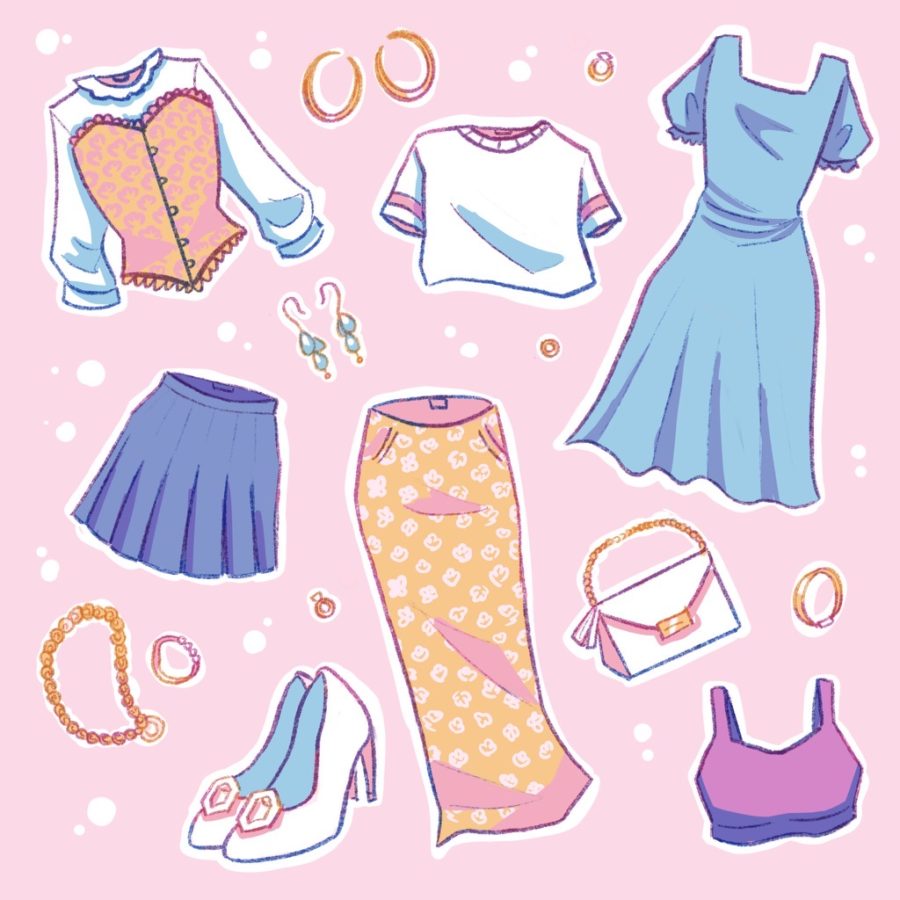Pressure to dress traditionally feminine limits girls’ self-expression
Traditionally feminine clothing includes dresses, skirts, heels, and the color pink.
May 25, 2023
When walking into any retail store, it becomes very apparent to almost anyone that the color pink and items such as purses and heels are identified as products for women only. However, the categorization of pink as feminine is relatively new. It is said that before World War ll, both genders used the color pink equally. According to an article from Racked, a catalog from 1918 recommended that mothers dress their female babies in blue, as it had a “much more delicate and dainty tone.” However, after First Lady Mamie Eisenhower claimed it was her favorite color and wore an all-pink outfit on the evening of her husband’s inauguration, pink clothing and accessories began to be associated only with women, a shift that would affect them for many years to come.
Simple items such as clothing are different for women than men because women’s clothing is and, if worn a certain way, women’s clothing can be sexually appealing to the male eye. According to an article on Fast Company, heels were made by designers Roger Vivier and André Perugia solely to make women attractive to men with no regard to how uncomfortable they were for the wearer. Another issue is the dress codes in schools that unfairly target girls and lead them to be overly conscious of how they appear to men, which can instill unnecessary anxiety regarding their clothing choices.
It may not seem like such a big deal if pink is assigned to girls and blue to boys. After all, they are just colors. However, this restricts both girls and boys’ ability to feel confident in their own bodies by wearing the types of clothes they enjoy. Girls who do not like to wear traditionally feminine clothes and prefer baggy shirts and caps—typically perceived as masculine—may feel pressured about their preferences and not fitting what society expects of them.
Essentially, this ends up hurting girls’ self-perception. Some girls may feel like their bodies are not beautiful or worthy if they wear revealing clothing and get called offensive remarks. All women’s bodies are shaped differently. Even if they wear clothing that is considered revealing, it does not mean they should feel ashamed of how they were built.
Ultimately, the pressure for women to don traditionally feminine clothing and the color pink, regardless of their preferences, is hurting their self-image. Now, it’s up to women and supportive men to change the rules in today’s modern world by spreading awareness about this issue through discussions or posts on social media. Hopefully, women will feel free to wear what they like, whether traditionally feminine, masculine, or in between—regardless of what society thinks they should do.


